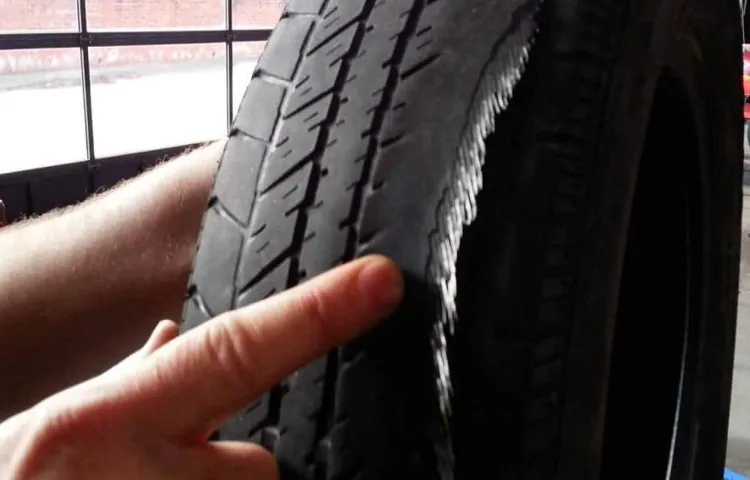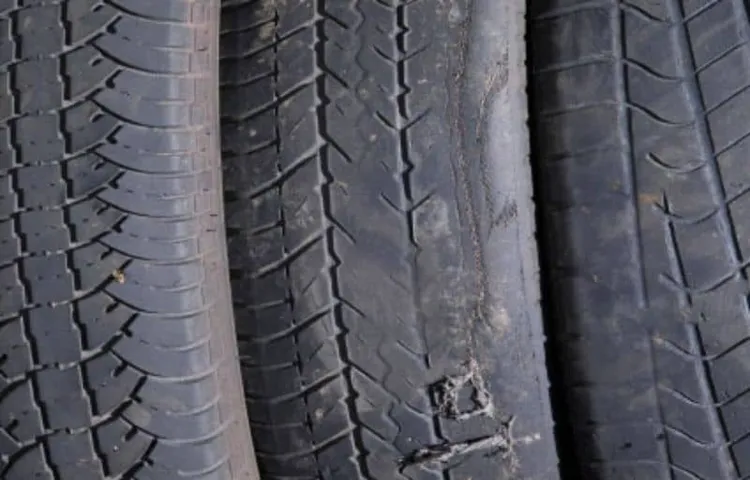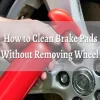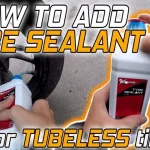Do you often see unusual wear patterns on the inside tires of your trailer? Inside tire wear can be caused by various factors, including alignment issues, underinflation, and overloading. These issues can lead to decreased tire lifespan, increased fuel consumption, and jeopardized safety on the road. That’s why identifying the root cause of inside tire wear is crucial for your trailer’s performance and your pocketbook.
In this blog post, we’ll dive into the main causes of inside trailer tire wear and provide you with practical solutions to keep your tires in top shape.
Table of Contents
Introduction
“What causes a trailer tire to wear on the inside?” If your trailer’s tire is wearing down unevenly, particularly on the inside, there are various issues that could be causing it. One primary cause is incorrect wheel alignment or suspension, which involves the angle and direction of the wheels in relation to the vehicle’s frame and each other. An unbalanced load distribution on the trailer can also cause one side of the tire to wear out more quickly than the other.
Additionally, worn-out or under-inflated tires can result in uneven wear and tear. It’s crucial to regularly inspect and maintain your trailer tires to ensure they are in good condition and working correctly. Failing to do so can lead to tire blowouts while driving, which could result in a dangerous accident.
Preventive maintenance is key to keeping your trailer tires in top shape and extending their lifespan.
Overview of inside tire wear on trailers
As a truck driver or fleet owner, it’s crucial to know the ins and outs of tire wear on trailers. Inside tire wear is a common problem that can cause a variety of issues, from decreased fuel efficiency to safety hazards on the road. But what exactly is inside tire wear, and how can you prevent it? Essentially, inside tire wear happens when the inner edges of your trailer’s tires wear down faster than the outer edges.
This can be caused by a variety of factors, such as overloading, improper inflation, or misaligned axles. By understanding the causes and potential consequences of inside tire wear, you can take steps to prevent it and ensure your vehicles stay safe and efficient on the road.

Alignment Issues
If you’ve noticed your trailer tire wearing on the inside, there’s a good chance you’re dealing with an alignment issue. Misaligned axles, tires, or suspension can cause uneven tire wear, particularly on the inner edges of tires. When your trailer is out of alignment, it can cause one tire to bear more of the load than others, leading to early wear and tear on that tire.
Other common causes of alignment issues include hitting potholes, running over curbs, or even hitting a curb during sharp turns. To prevent tire wear on the inside, ensure your trailer’s alignment is checked regularly by a professional. Additionally, avoid hitting obstructions on the road and driving too fast over speed bumps.
Doing so can go a long way in avoiding costly tire replacements and prolonging the life of your trailer’s tires.
Improper alignment causing wear on the inside of the tire
Alignment issues can cause wear and tear on the inside of your tires, which can be costly and dangerous in the long run. Improper alignment occurs when your vehicle’s wheels are not aligned perpendicular to the road. Over time, it can cause one side of your tire to wear out faster than the other.
This can lead to decreased traction, less control on the road, and poor fuel efficiency. The main cause of alignment issues is poor vehicle maintenance. Regular check-ups and inspections can help you avoid these issues.
An important aspect of vehicle maintenance is replacing and aligning worn-out tires. Proper alignment ensures that your car drives smoothly and your tires wear evenly. At the end of the day, a little attention to your vehicle’s alignment can pay off in the long-run, saving you money and protecting you and your passengers while on the road.
So, it’s important to always ensure your alignment is in check to avoid unnecessary wear on your tires.
How to detect and fix alignment issues
Alignment issues can occur in various aspects of design, like websites, print media, and more. It happens when elements are not properly arranged, resulting in an unprofessional and cluttered appearance. With technology evolving at a breakneck pace, identifying alignment issues is more important than ever.
Therefore, using software tools like Adobe Illustrator or InDesign can help detect and fix alignment problems. It’s also essential to ensure that all text, images, and graphics are correctly aligned with one another and placed to enhance readability and make the design more appealing to the eye. Always double-check the alignment before printing or publishing the design work to ensure it comes out as intended.
By doing so, one can avoid costly and time-consuming errors that may negatively impact the overall design’s success.
Inflation Problems
Trailer tire wear on the inside can be caused by a number of factors, with inflation issues being one of the main culprits. When a trailer tire is not properly inflated, it can cause uneven wear patterns to develop. As the tire rolls, the weight of the trailer pushes down on the tire, causing it to become compressed.
If the tire is underinflated, the sidewalls can bulge out, leading to uneven wear on the inside of the tire. This can cause the tire to wear out much faster than it otherwise would. It’s important to regularly check that your trailer tires are properly inflated and to adjust the pressure as needed to ensure even wear.
By doing this, you’ll help to prevent premature tire wear and reduce the likelihood of unexpected blowouts while on the road. So if you notice any unusual wear patterns on your trailer tires, make sure to investigate the cause and take action to address it promptly.
Under-inflated tires causing wear on the inside of the tire
Under-inflated tires can cause wear on the inside of the tire, which can ultimately lead to a flat tire or blowout. Inflation problems are a common issue among car owners, as many tend to overlook the importance of properly inflating their tires. Low tire pressure leads to uneven wear on the tire’s tread, and the inside of the tire is particularly susceptible to damage.
It’s no surprise that under-inflated tires can have a major impact on a vehicle’s performance, fuel economy, and overall safety. Maintaining the correct tire pressure is essential not only for the function of the tire but also for the longevity of the tire. So always make sure to check your tire pressure regularly and inflate them properly to avoid this issue.
Remember, proper inflation is the key to keeping your tires running smoothly and safely on the road.
How to check and maintain proper tire pressure
Maintaining proper tire pressure is essential for the safety and performance of your vehicle. Inflation problems can cause numerous issues, including decreased fuel efficiency, uneven tread wear, and potentially dangerous blowouts. To ensure your tires are inflated correctly, you should check them at least once a month using a tire pressure gauge or by visiting your local service station.
The recommended tire pressure for your vehicle can usually be found in the owner’s manual or on the label located on the driver’s side door jamb. It’s important to note that tire pressure can fluctuate with temperature changes, so it’s important to check the pressure when the tires are cold. If your tire pressure is too low, you can add air at home or at a service station.
Be sure not to overinflate your tires as this can also lead to issues. By regularly checking and maintaining proper tire pressure, you can ensure a safer and more efficient driving experience.
Overloading
If you notice that your trailer tire is wearing on the inside, the most common cause is overloading. Overloading occurs when you pack your trailer with too much weight beyond its weight capacity. This puts too much pressure on the tires, causing them to wear unevenly, with the inside wearing out faster than the outside.
It is important to always check the weight capacity of your trailer and make sure not to exceed it. You can also distribute weight evenly across the trailer and inflate the tires to the recommended pressure for the load to help prevent the inside tire wear. Additionally, regularly inspecting your tires for any signs of wear and tear can help detect problems early and prevent costly damage or accidents.
Remember that overloading can not only damage your tires, but it can also compromise the safety and stability of your trailer, putting you at risk on the road.
Excessive weight causing inside tire wear on trailers
Have you ever noticed your trailer’s inside tire wear happening sooner than you expected? While there could be various reasons for this problem, one possible culprit is overloading. Excessive weight can cause the inside tires to get depressed, causing the treads to wear out faster. This is particularly common in trailers that are frequently subjected to a lot of weight.
If you keep loading your trailer beyond its weight capacity, you’re drastically increasing the wear on your tires, and creating both safety hazards and more maintenance costs. So, try to balance loads in your trailer, and keep an eye on the weight limit. Remember, overloading can put a lot of unnecessary strain on your tires, reducing their lifespan and increasing the risk of a blowout.
Always be mindful of the fact that keeping your tires in good condition is imperative for a safe and comfortable journey.
Proper load distribution and weight limits for trailers
Overloading Proper load distribution and weight limits for trailers are crucial factors to consider when transporting goods. Overloading can cause a myriad of problems such as reduced fuel efficiency, difficulty in handling the trailer, and most importantly, increased safety risks. Every trailer type has a maximum weight that it can safely handle, and surpassing this limit may lead to serious accidents.
It’s essential to always check the weight and balance of the goods to ensure that it’s distributed evenly across the trailer’s axles. Additionally, it would be best to familiarize yourself with the Gross Vehicle Weight Rating (GVWR) and the cargo weight limit for your trailer. By understanding these components, you can avoid overloading and ensure a smooth, safe drive.
Remember, trailer safety is not only dependent on the driver’s skills and experience but also on their diligence in monitoring, maintaining and distributing weight properly.
Conclusion
In conclusion, the inside wear on a trailer tire can be attributed to a number of factors such as improper inflation, overloading, poor alignment, or simply driving on rough terrain. Much like the human body, it’s important to take care of all the parts that make up a trailer, and make sure they’re working together smoothly to avoid any unnecessary wear and tear. So, remember to keep your trailer in tip-top shape, and give those tires a little TLC – it’s the key to smooth sailing on the open road!”
Importance of monitoring trailer tire wear
Monitoring the wear and tear of trailer tires is crucial, especially if you are carrying heavy loads. Overloading can cause the tires to wear down faster than usual, thus leading to an increased risk of tire failure and blowouts. Overloading can also cause the tires to overheat, which can lead to a dangerous situation.
Therefore, it is essential that you monitor your tire wear and keep an eye out for any signs of wear and tear. You should also make sure that you properly inflate your tires and that you avoid overloading your trailer. By doing so, you can help ensure that your tires last longer and that you stay safe on the road.
Remember, your tires are the only thing between your vehicle and the road, so it’s important to take tire wear seriously.
FAQs
What are the common causes of tire wear on the inside of a trailer?
The most common causes of tire wear on the inside of a trailer are misalignment, over-inflation, under-inflation, worn suspension parts, and unbalanced tires.
How can misalignment affect the wear of trailer tires?
Misalignment can cause trailer tires to wear on the inside edge because it causes the tire to ride at an angle, putting uneven pressure on the inside edge.
What is the recommended tire pressure for trailer tires?
The recommended tire pressure for trailer tires can vary depending on the tire size and load rating, but it is always best to follow the tire manufacturer’s recommendations for the specific tire.
How can worn suspension parts cause tire wear on the inside of a trailer?
Worn suspension parts can cause the tires to angle inward or outward, which can cause uneven pressure on the inside edge of the tire.
What is tire rebalancing and how can it help prevent tire wear on the inside of a trailer?
Tire rebalancing involves adjusting the balance of the tire to ensure that it rotates evenly, which can help prevent uneven tire wear on the inside edge.
How often should trailer tires be rotated to prevent wear on the inside edge?
Trailer tires should be rotated every 5,000-8,000 miles to ensure even wear and reduce the risk of wear on the inside edge.
Can driving habits affect tire wear on the inside of a trailer?
Yes, harsh driving habits such as abrupt braking and accelerating or taking corners too quickly can cause the tires to wear unevenly on the inside edge.



